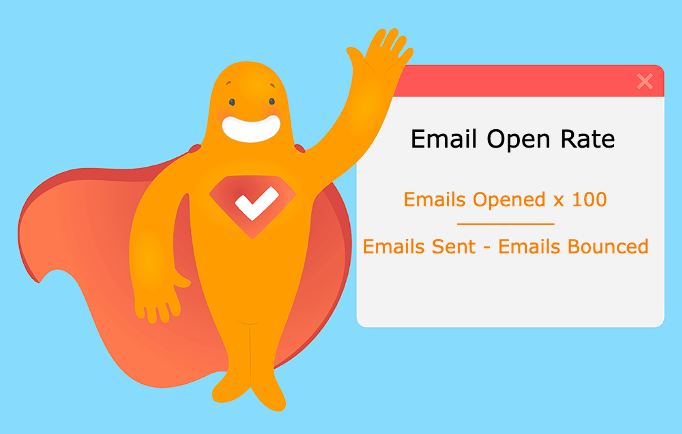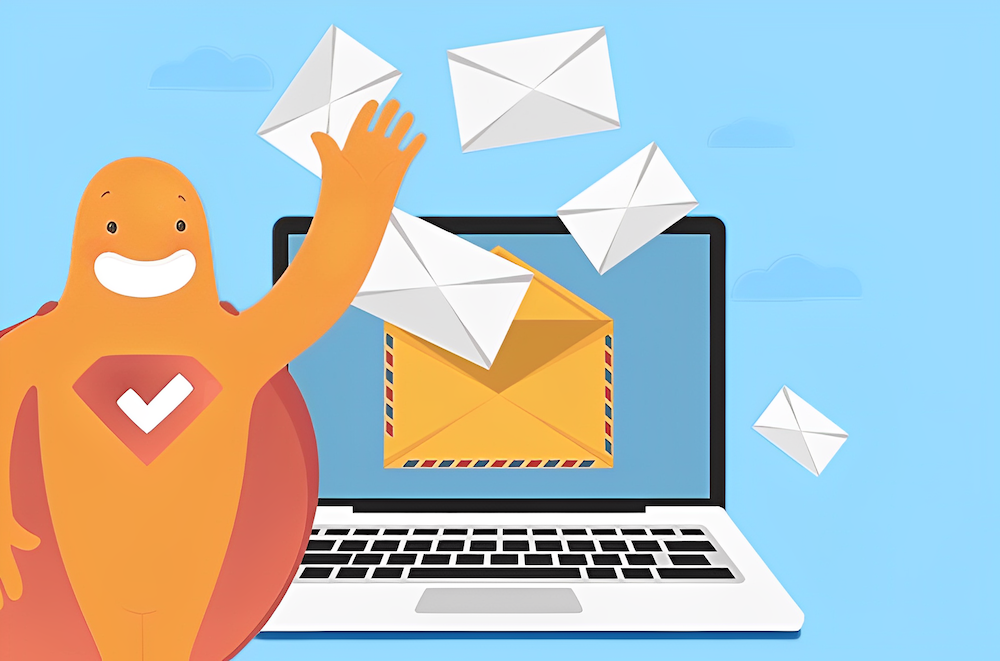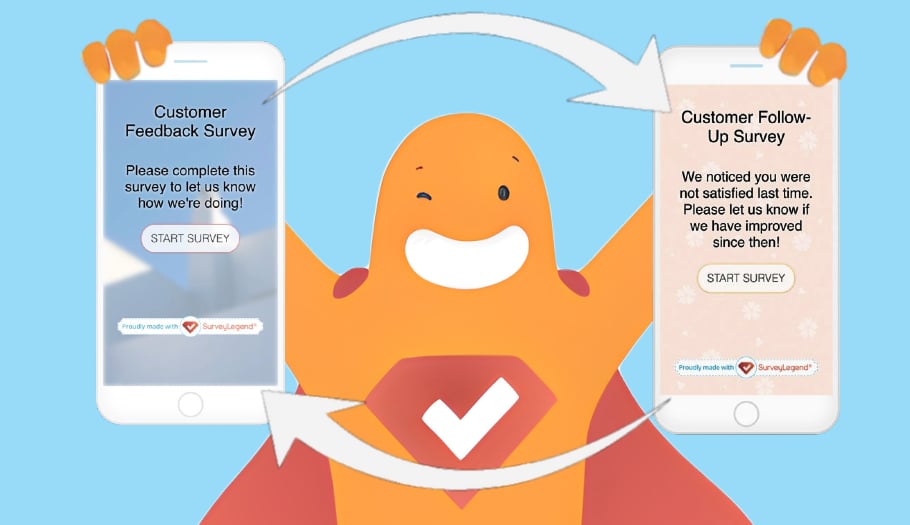We’ve all heard the saying, “you never get a second chance to make a first impression,” and it’s true. Forbes reports that within the first seven seconds of meeting, people will have a solid impression of who you are. This idea can be applied to subject lines for surveys. After all, email subject lines are your first impression with potential respondents. Your subject line is the first thing they’ll see, and will likely determine whether they open the email or not.
Why spend hours crafting a well-written survey only to undermine it with a lackluster subject line? Here’s how to create catchy email subject lines for surveys that will help guarantee respondents open the email – and open themselves up for the survey.
Create your FREE Survey, Poll, or Questionnaire now!
Understanding Email Open Rates
Email open rates are just that: The number of people who open your email. The higher the rate, the better – this shows interest. So, let’s say you send an email to 500 people and 50 open it. Your email open rate is 10%.
Of course, it’s not quite that simple (is it ever?). A few things to keep in mind:
- Open rate is only based on unique opens. So, if someone opens an email more than once (say, they open it but don’t have time for the survey, but come back later to take it), they will only be counted one time.
- Bounced emails are not calculated in open rates. Bounced emails means your email did not reach the recipient so there was no chance for them to open it. It could bounce because your email triggered a spam filter, because the email account no longer exists, and so on.
Here’s the formula for calculating email open rates:

So, let’s say you sent out 5,000 emails. 800 people opened the email and 600 bounced.
800 x 100 = 80,000
5,000 – 600 = 4,400
Now, divide:
80,000 / 4,400 = 18%
Not bad! Influencer Marketing Hub reports that a good email open rate is one that meets the average across industries—right around 17%. The site recommends, however, that to determine a good email open rate for your business you should track actual open rates for a full quarter and average them. That will give you a benchmark against which you can measure your open rates over time to ensure that they keep improving.
12 Ways to Create Email Subject Lines for Surveys (and Improve Email Open Rates)
When you’ve spent considerable time creating a survey, it can be disappointing to send it out and receive limited response. So, how do you write a catchy email subject line? Here are 12 ways to create email survey subject lines to gain people’s attention and improve your email open rates.
1. Get Personal
One way to get people’s attention is to address them directly, using their first name in the subject line. Marketing Dive reveals that using personalization in email subject lines can increase open rates by 50%! That means, if you’re averaging about 10%, you could double that to 20% using personalization.
Not all personalization requires using the respondent’s first name. For example, if you’ve already collected information about them (for example, their birthday), you might entice them with a subject line such as “Birthday Deal! Earn more points for taking this survey on your special day.”
2. Recognize Past and Recent Interactions
If someone has interacted with you in the past, it can help to acknowledge that. For example, if you’re emailing people who have taken a survey in the past but not recently, you might use a subject line such as “[NAME], it’s been a while! We have a new survey for you.”
This also works when following up on an interaction. If you’re seeking feedback on someone’s recent purchase, be sure to acknowledge that. “How was your recent experience at Acme Service?” is simple while letting the respondent know that you know they were recently there.
3. Tap into Interests
Some of the best words to use in email subject lines tap into people’s interests. If possible, take into consideration what the respondent may be interested in and put that topic in your subject line. If you’ve discovered in previous surveys, for example, that they like boating, then a subject line of “Boating survey just for you” will be more enticing than “New survey just for you.” By highlighting their interest, they recognize that you understand them and have a survey that interests them.
4. Use Emojis
Most people get a lot of emails. One way to stand out in a crowded inbox is to use emojis. This can be especially impactful when targeting younger generations that use emojis everyday when texting or posting on social media. Just be sure that you’re not misleading potential respondents with an emoji that doesn’t apply to your survey. Always make the emoji applicable, such as “Super Bowl Survey! 🏈 “
5. Beware of Spam Filters
We’ve all heard that using “free” in a subject line can trigger spam filters (this still holds true when not used genuinely over time). Internet service providers use these filters to protect their users from unwanted or junk email. And, if you email them too many times with objectionable language, you could even be blacklisted.
So, other than “free,” what are the words or combinations of words that can trigger spam filters? Hubspot has kindly put together a list of 394 words to avoid in 2023 when sending an email. Look it over before crafting your next survey email subject line to be sure that your email isn’t sent directly to the spam or trash bin. Then, be mindful of words that can trigger the dreaded spam filter in the future.
6. Highlight Incentives
Who doesn’t like getting something for (almost) nothing? Online surveys are an example of rewarding people for little effort. For example, offering $5 for five minutes of their time. That’s appealing – who doesn’t have five minutes, and who wouldn’t mind five extra bucks in their wallet?
So, if you’re offering an incentive for taking your survey, highlight that in the subject line. “$5 for 5 minutes of your time” or something similar will likely garner more clicks than a generic email subject line. Speaking of incentives, be sure to check out our blog 10 Pros & Cons of Survey Incentives + Survey Incentive Ideas.
7. Keep it Simple
It’s essential to keep email survey subject lines simple and to the point. Campaign Monitor shows that short subject lines tend to win, with around 41 characters being the optimal length. The article notes that some marketing experts recommend going even shorter if possible. Plus, go too long and the subject line may be cut off on some people’s browsers. Even if you have to go long, be sure to put the most important information at the front.
8. Be Honest About Time
People may agree to a survey, and then become frustrated as it goes on, and on, and on. This leads to many people dropping out of a survey which can make analysis more difficult. So, be honest right upfront with your subject line. Got a quick one? Let them know: “We need just one minute of your time.” Going longer? Let that be known too. “20 minute survey can change how we do business.”
9. Highlight Security and/or Confidentiality
With the number of email scams on the rise, some people may be hesitant to take any type or survey or fill in any personal information. Of course, this makes it harder for researchers to do their jobs. To get around this, try highlighting in your survey subject line that it’s secure or confidential (we break down the difference between our anonymous and confidential surveys here).
10. Create Anticipation or FOMO
Recognizing people’s anticipation or FOMO (Fear Of Missing Out) is a great way to increase open rates. You’re either tapping into excitement, or leading potential respondent’s to believe that they’re missing out on something by not giving their opinion. For example, you might tease with a subject line such as “New [PRODUCT] coming soon – tell us what you think!” This type of survey email subject line will get people who don’t want to miss out on giving their opinion incentive to click and partake in the survey.
11. Ask for Help
Marketers tend to think people are likely to reject a request for help, so they don’t ask for it. However, most people like to be seen as helpful and often have a desire to provide their input. Therefore, simply asking for their help can have a big impact. An email subject line asking for help such as “We need your help to do better” or “Help us help others” can go a long way toward getting responses.
12. Tickle Their Funny Bone
Last but not least, try getting a laugh. Drip Marketing writes “Getting a subscriber to crack a smile or straight up laugh when browsing through their inbox is a surefire way to rise above the noise and grab their attention.” We couldn’t agree more. When there are so many emails, being the stand-out subject line that makes someone smile or laugh could be all it takes to get them to open the email and engage with your survey.
Don’t Forget to A/B Test Email Subject Lines
How do you know if your subject line is working (or not)? Always A/B test them. A/B testing is a way to compare how one version of your email subject line is performing against another version of it. So, you might send out one email with a humorous subject line, and another one highlighting an incentive. Which gets more clicks? Based on this information, you’ll be better prepared to write subject lines in the future.
Conclusion
When you’ve crafted a good survey, you want to be sure people take it. So, be sure to put as much effort into a good subject line as you put into your survey. Studies show that 47% of people open an email based on the subject line alone, so you’ve got to be thoughtful about it. While SurveyLegend cannot write your subject line for you, we can help you create a great survey. Our free survey maker allows you to put together beautiful and fun surveys, even including survey pictures to make them more engaging. Once you’ve completed your survey, simply send the link in emails with a subject line based on some of the ideas here. That’s all there is to it. Start today!
How do you normally craft email subject lines? Do you A/B test them to see which is most effective? We’d love to hear from you in the comments!
Create your FREE Survey, Poll, or Questionnaire now!
Frequently Asked Questions (FAQs)
Email subject lines can make all the difference in regards to whether someone opens your email or not. Some studies suggest that nearly 50% of people open emails based on the subject line alone.
To engage with email recipients, use words that catch their attention in subject lines. This could be their name, asking for “help,” highlighting an incentive, and more. Sometimes, you may not use many words at all, opting to get their attention with an emoji in your email subject line.
A/B testing of email subject lines is a way to determine which subject line gets the best open rates. To perform A/B testing, send out half of your surveys to one equal group with one subject line, and the other half to another equal group with a different subject line. Then, see which performs better based on email open rates.





